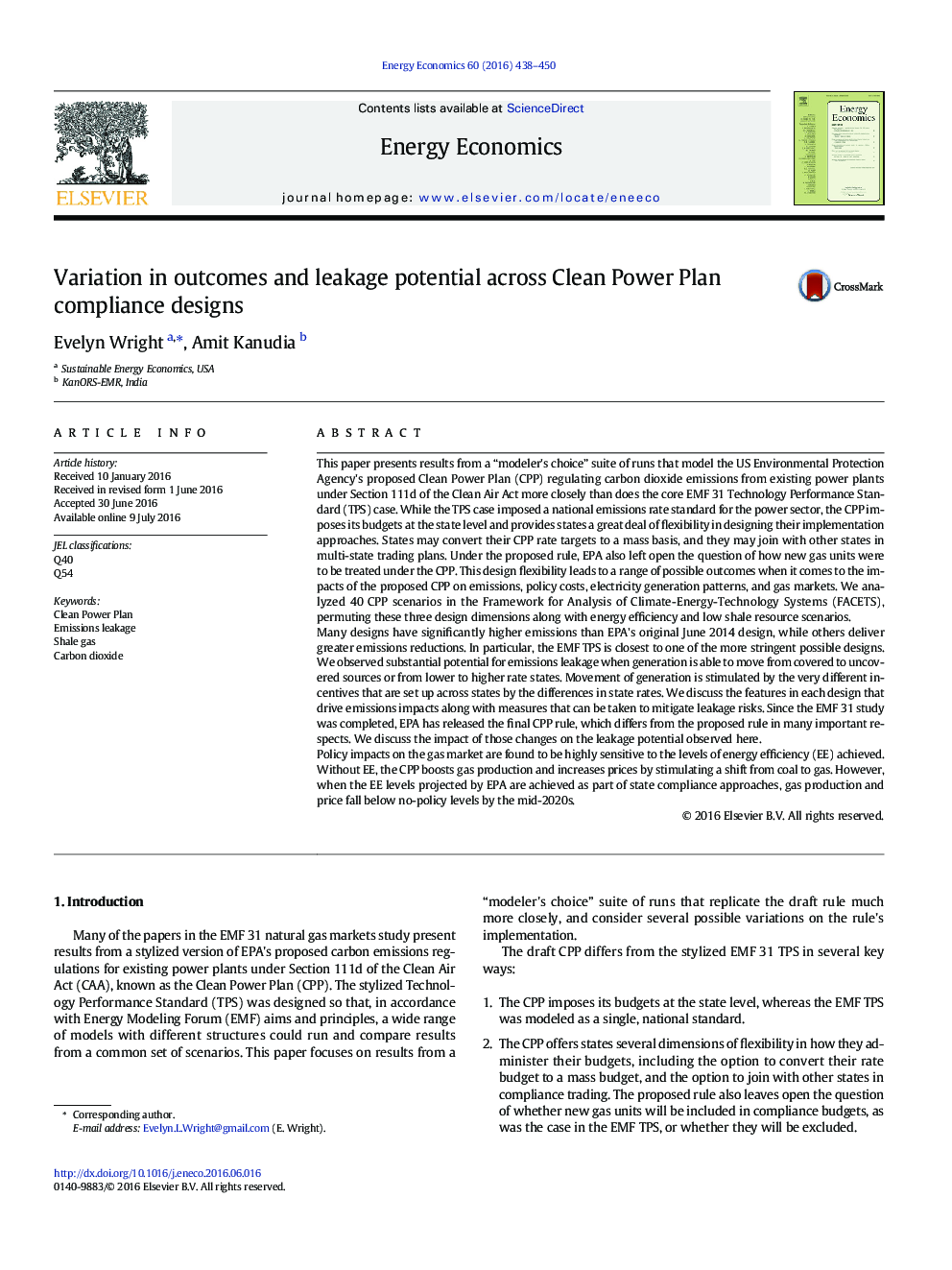| کد مقاله | کد نشریه | سال انتشار | مقاله انگلیسی | نسخه تمام متن |
|---|---|---|---|---|
| 5063924 | 1476704 | 2016 | 13 صفحه PDF | دانلود رایگان |
- A detailed, state-level analysis of compliance design choices under the Proposed Clean Power Plan
- CPP outcomes depend on state-level choices and incentives.
- Some designs show potential for significant emission leakage.
- The CPP produces a temporary boost to gas consumption and price. Impacts depend on compliance design.
- If proposed levels of energy efficiency are achieved, the CPP reduces gas consumption.
This paper presents results from a “modeler's choice” suite of runs that model the US Environmental Protection Agency's proposed Clean Power Plan (CPP) regulating carbon dioxide emissions from existing power plants under Section 111d of the Clean Air Act more closely than does the core EMF 31 Technology Performance Standard (TPS) case. While the TPS case imposed a national emissions rate standard for the power sector, the CPP imposes its budgets at the state level and provides states a great deal of flexibility in designing their implementation approaches. States may convert their CPP rate targets to a mass basis, and they may join with other states in multi-state trading plans. Under the proposed rule, EPA also left open the question of how new gas units were to be treated under the CPP. This design flexibility leads to a range of possible outcomes when it comes to the impacts of the proposed CPP on emissions, policy costs, electricity generation patterns, and gas markets. We analyzed 40 CPP scenarios in the Framework for Analysis of Climate-Energy-Technology Systems (FACETS), permuting these three design dimensions along with energy efficiency and low shale resource scenarios.Many designs have significantly higher emissions than EPA's original June 2014 design, while others deliver greater emissions reductions. In particular, the EMF TPS is closest to one of the more stringent possible designs. We observed substantial potential for emissions leakage when generation is able to move from covered to uncovered sources or from lower to higher rate states. Movement of generation is stimulated by the very different incentives that are set up across states by the differences in state rates. We discuss the features in each design that drive emissions impacts along with measures that can be taken to mitigate leakage risks. Since the EMF 31 study was completed, EPA has released the final CPP rule, which differs from the proposed rule in many important respects. We discuss the impact of those changes on the leakage potential observed here.Policy impacts on the gas market are found to be highly sensitive to the levels of energy efficiency (EE) achieved. Without EE, the CPP boosts gas production and increases prices by stimulating a shift from coal to gas. However, when the EE levels projected by EPA are achieved as part of state compliance approaches, gas production and price fall below no-policy levels by the mid-2020s.
Journal: Energy Economics - Volume 60, November 2016, Pages 438-450
